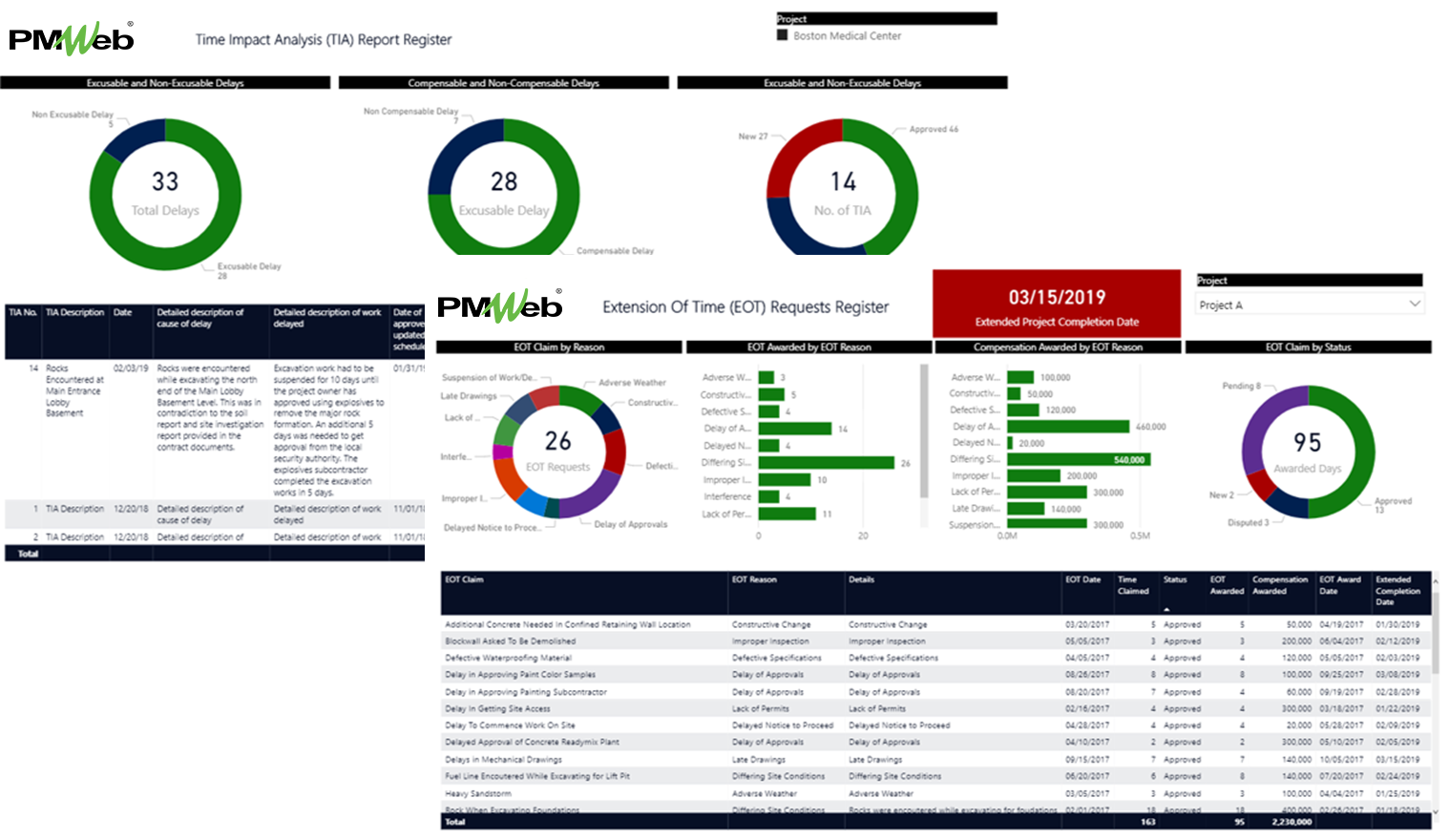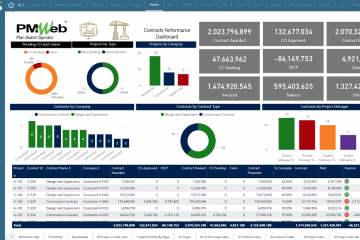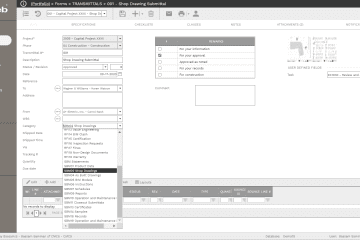Similar to other capital construction projects’ deliverables, there is a growing trend among Project Owners to include a detailed specification section for Contractors to fulfill when it comes to submitting the baseline schedule, schedule revisions, interim progress updates, and other processes that are associated with the project schedule. Specification section 01 32 01.00 10 is usually the project’s specification section that will detail those requirements. Although specifications would become standard for all projects executed by the Project Owner, nevertheless they could vary depending on the selected project delivery method, size, and type of the project among others. Failing by the Contractor to fulfill the requirements of the project schedule specification could result in having the Project Owner to delay the release of interim progress payments, appointing a third-party scheduling consultant to perform the works, etc. Nevertheless, the entity that will be negatively impacted most will be the Contractor as they lose the great benefits of having the project’s schedule as a formal communication to support their achieved progress, reporting the impact of disruption events, supporting their extension of time requests, enabling them to do the time impact analysis among many others.

A dedicated planning and scheduling software, like Primavera P6 or MS Project, will be needed to fulfill the requirements of the created integrated project schedule. Actually, many of the project schedule specifications might event specify the name of the software to be used. The planning and scheduling software will be used to create the Work Breakdown Structure (WBS), add all activities and milestones, add the sequence logic between those activities, add schedule constraints, add schedule calendars, add labor, material and equipment resources, upload schedule activities with their needed resources, upload schedule activities with their scheduled value, add submittal activities, add project owner activities, add testing and commissioning activities, add project closeout and handover activities, update interim achieved progress information, analyze the impact of delay and disruption events on the project’s completion date, prepare and submit schedule performance reports among others.
Nevertheless, the same project schedule specifications have other requirements that the dedicated planning and scheduling software cannot fulfill. Those would include for example the progress narrative report, the weekly progress update minutes of the meeting, the extension of time (EOT requests, time impact analysis (TIA) submissions, baseline, revised and interim update schedule submission, and executive project schedule reporting. Using a Project Management Information System (PMIS) like PMWeb would help planning engineers to fulfill all those requirements that the planning and scheduling software cannot fulfill.
Maybe the most important of all those project schedule processes is the Schedule Narrative Report form for which PMWeb custom form builder will be used to create and manage. The Narrative Report is expected to communicate to the Project Owner the thorough analysis of the schedule output and the plans to compensate for any problems, either current or potential, which are revealed through that analysis.
The Schedule Narrative Report will be used to identify and discuss the work scheduled to start in the next update period, provide a description of activities along the two most critical paths where the total float is less than or equal to 20 workdays, provide a description of current and anticipated problem areas or delaying factors and their impact and an explanation of corrective actions taken or required to be taken, identify and explain why activities based on their calculated late dates should have either started or finished during the update period but did not, identify and discuss all schedule changes by activity ID and activity name including what specifically was changed and why the change was needed and identify and discuss out-of-sequence work.
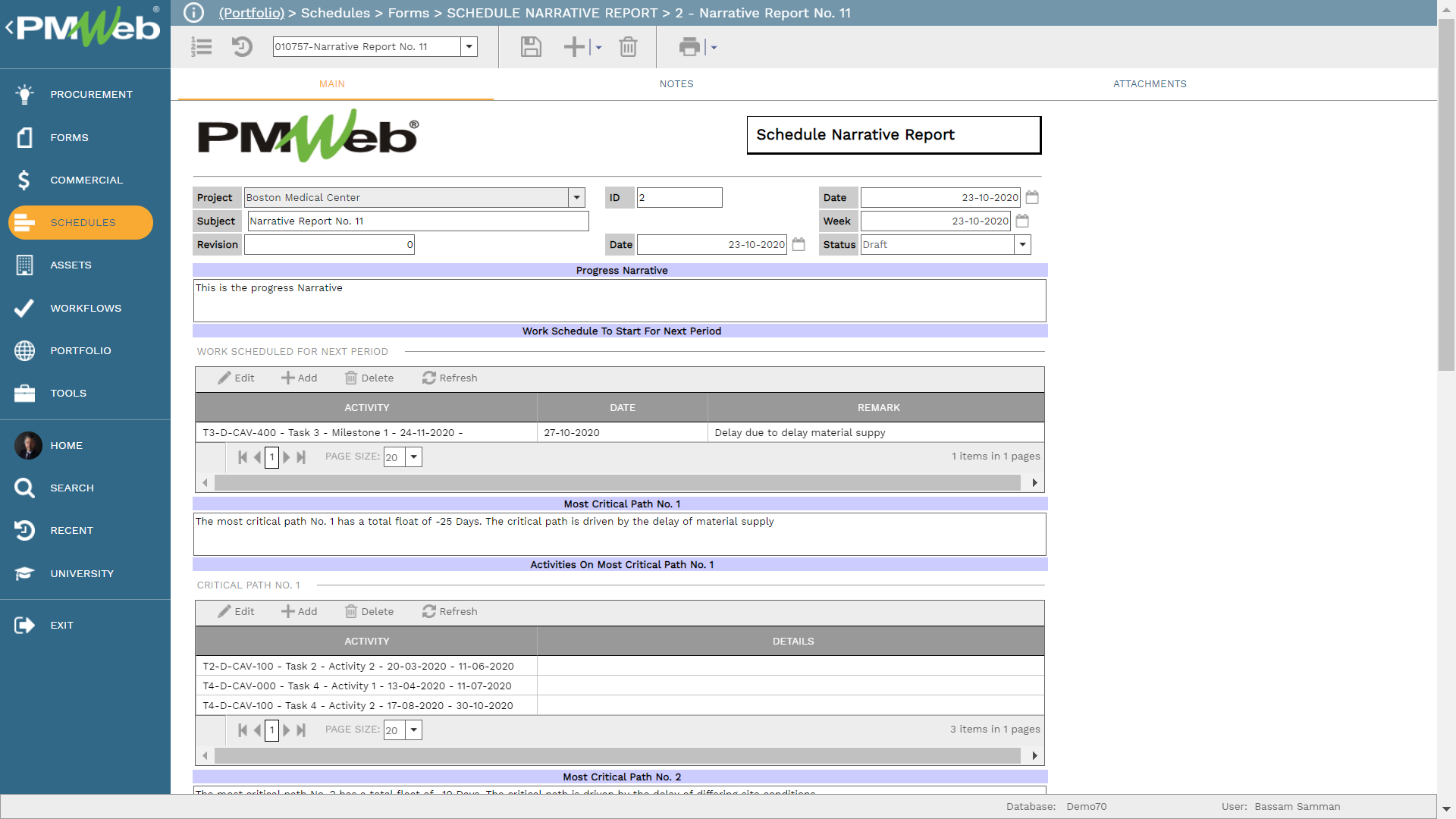
For the Schedule Narrative Report sections that require identifying the project schedule activities for the required analysis and reporting, tables will be created for which they will have a field to select the relevant project schedule activities. The project schedule activities log will become readily available when the project schedule is imported to PMWeb. The schedule import functionality in PMWeb allows importing the baseline schedule, schedule revisions and interim project schedule updates. This will enable selecting the project schedule version for which activities will be selected from in the report.
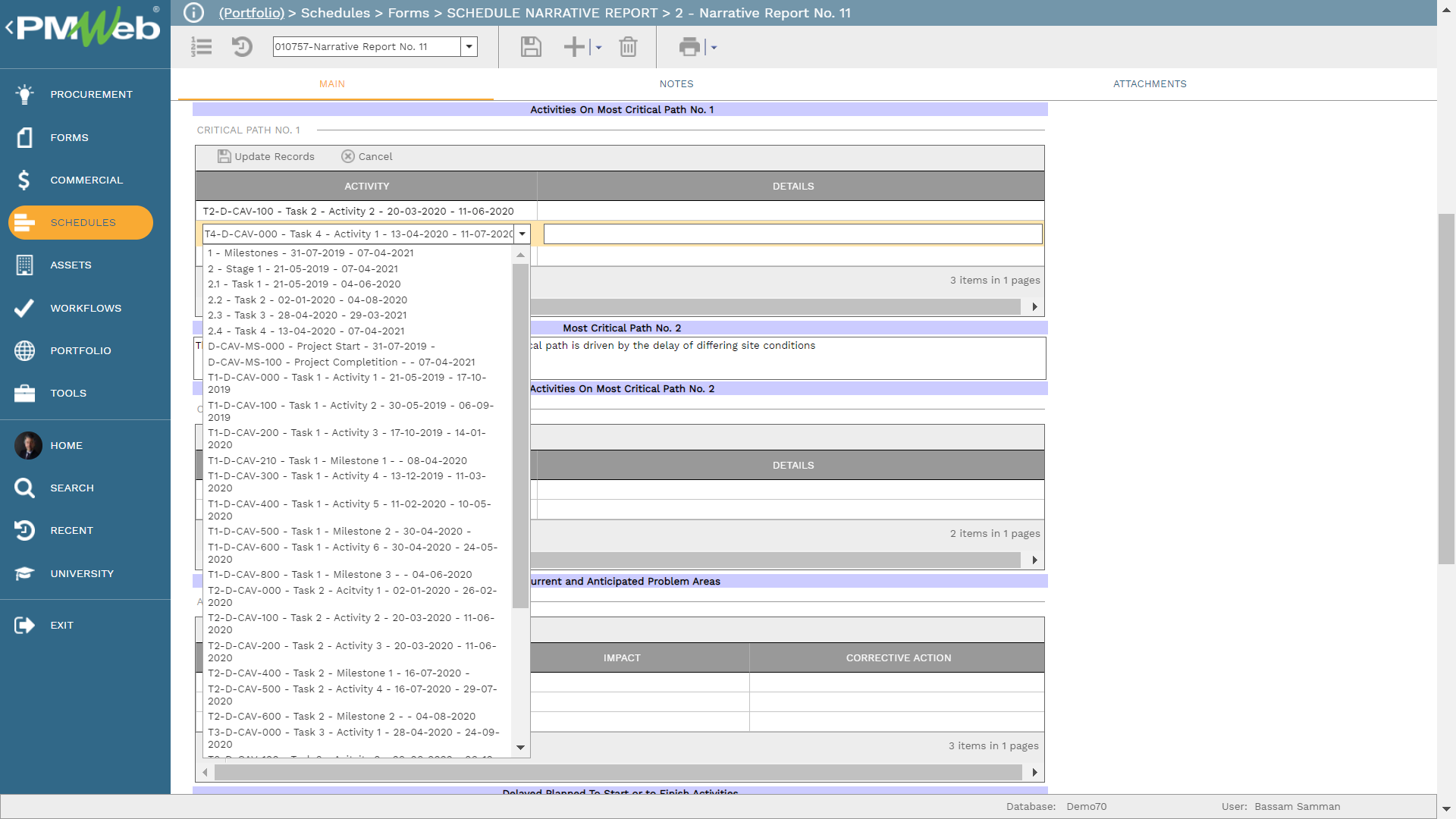
In addition, for tables that require selecting a value from a predefined list of values, the PMWeb selection lists module will be used to define those values. For example, for the section that details schedule changes, it is required to identify the change reason. Those could include at a minimum new and deleted activities, logic changes, duration changes, calendar changes, lag changes, resource changes, and actual start and finish date changes.
In addition, the form will include a list of reports that need to be submitted along with the Schedule Narrative Report. Those pre-determined reports will be generated from the planning and scheduling software and saved in PDF file format. Although hose reports can be attached directly to the form, nevertheless, it is highly recommended that those reports are first uploaded to the PMWeb document management repository and then attached to the Schedule Narrative Report.
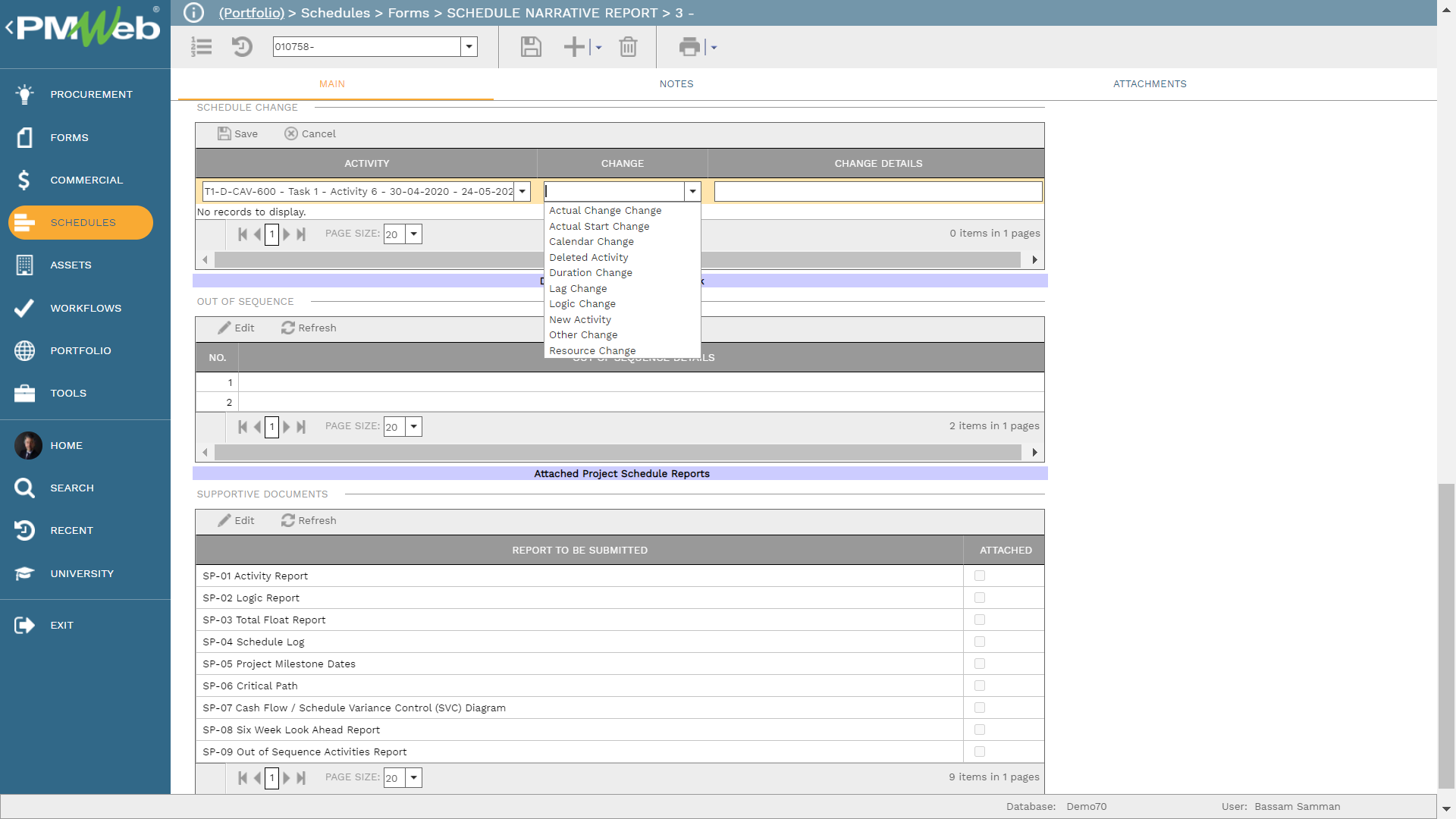
PMWeb document management repository will be used to upload and store all relevant project schedule reports. It is recommended to have a separate folder for each issued Schedule Narrative Report where all relevant reports will be uploaded and stored in that folder. Each document management folder or subfolder can be assigned with the needed access permission rights to limit access to those folders and subfolders to only authorized project team members.
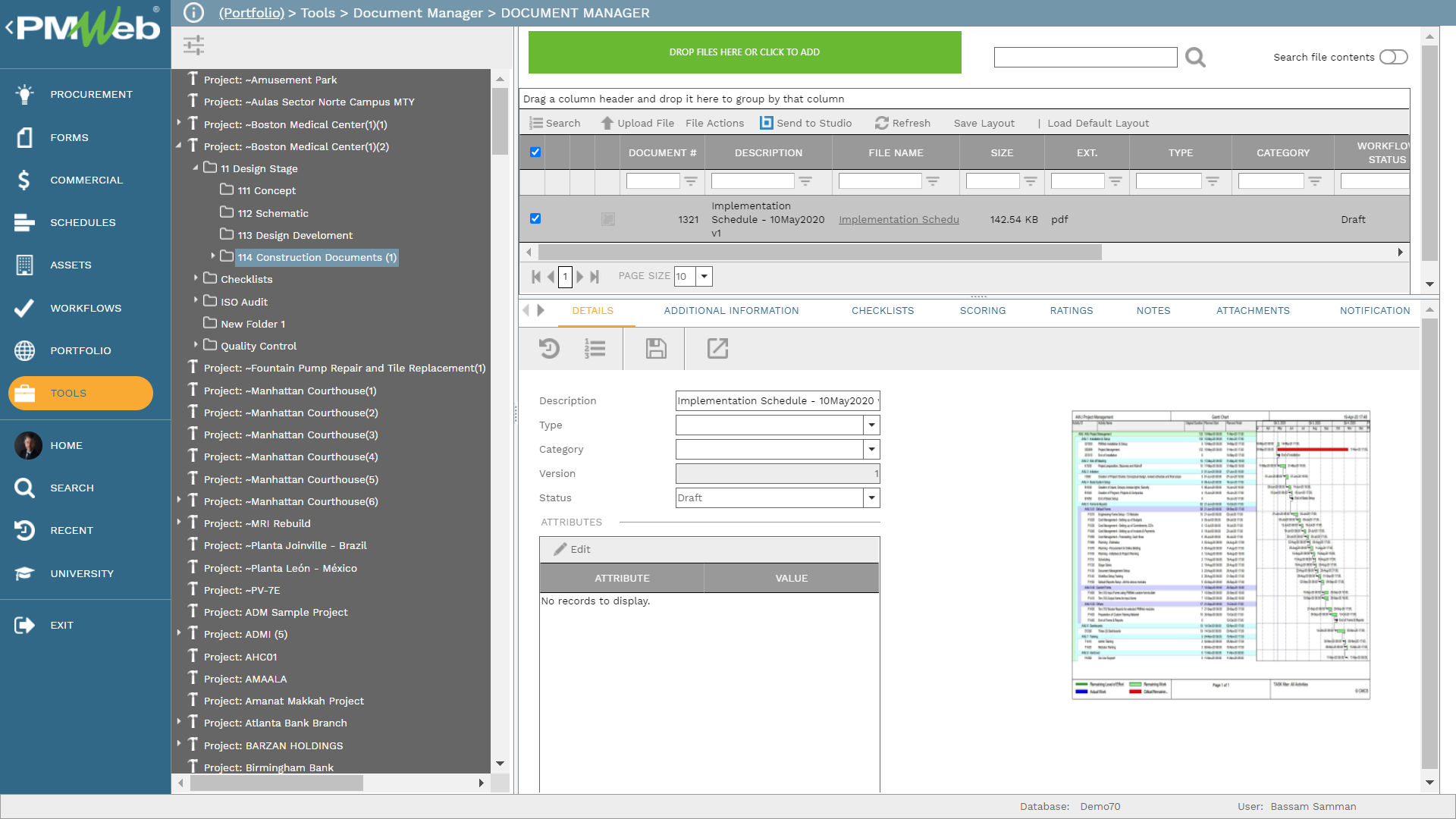
To ensure that the Schedule Narrative Report has been reviewed and approved as stated in the project management plan, a workflow will be assigned to the form. The workflow will identify the sequence of tasks that are needed to submit, review, and approve the process. Those tasks will be assigned to their responsible project team members in accordance with the project’s responsibility assignment matrix (RAM) as well as the set authority approval levels.
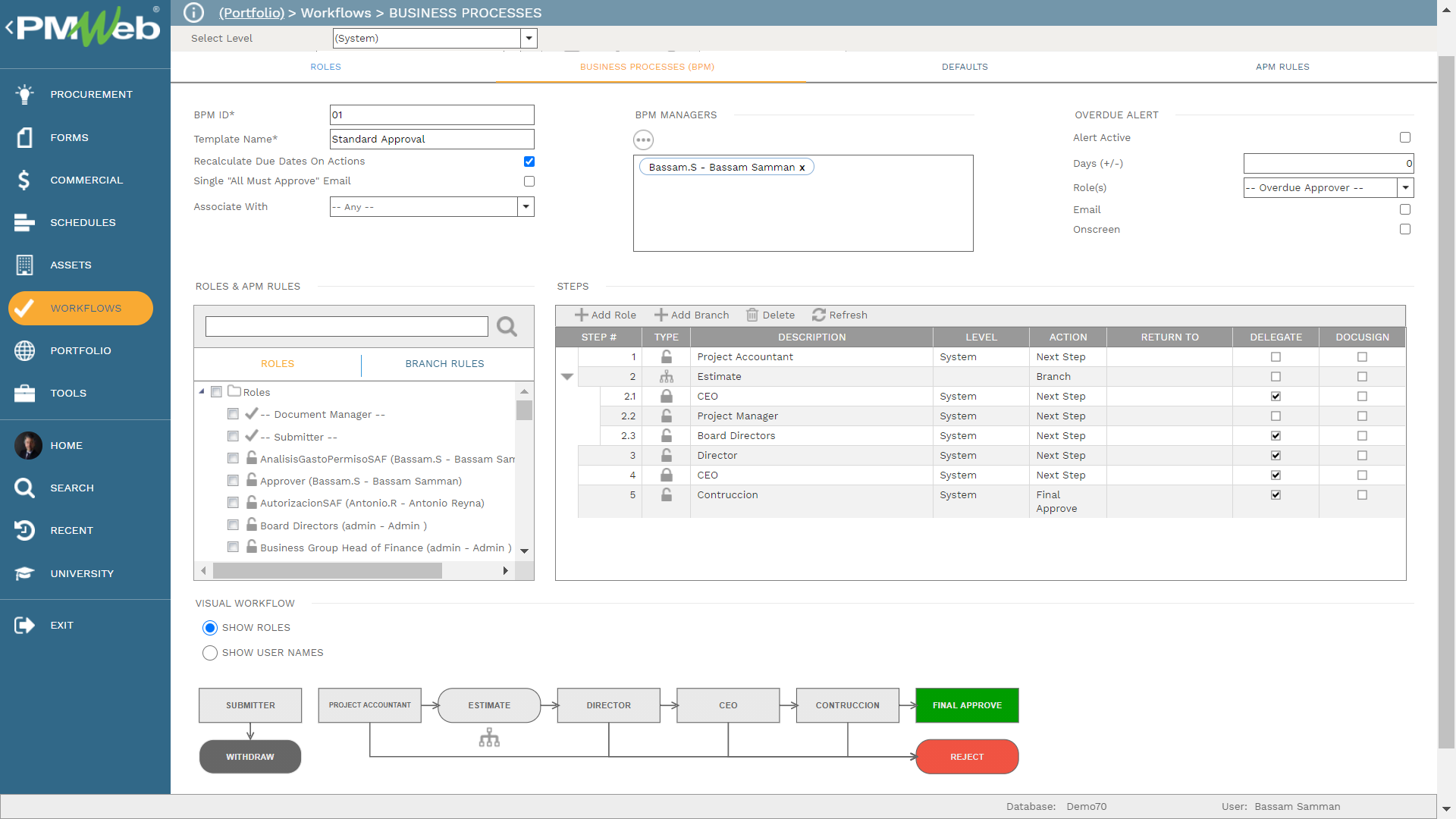
As for the other processes needed to fulfill the project’s schedule specification requirements, PMWeb ready to use module for Meeting Minutes will be used to document the discussed items of the weekly progress update minutes of the meeting. In addition, PMWeb ready to use module for Transmittals will be used to submit baseline, revised, and interim update schedule submission. For the extension of time (EOT request and time impact analysis (TIA) forms, PMWeb custom form builder will be used to create those forms.
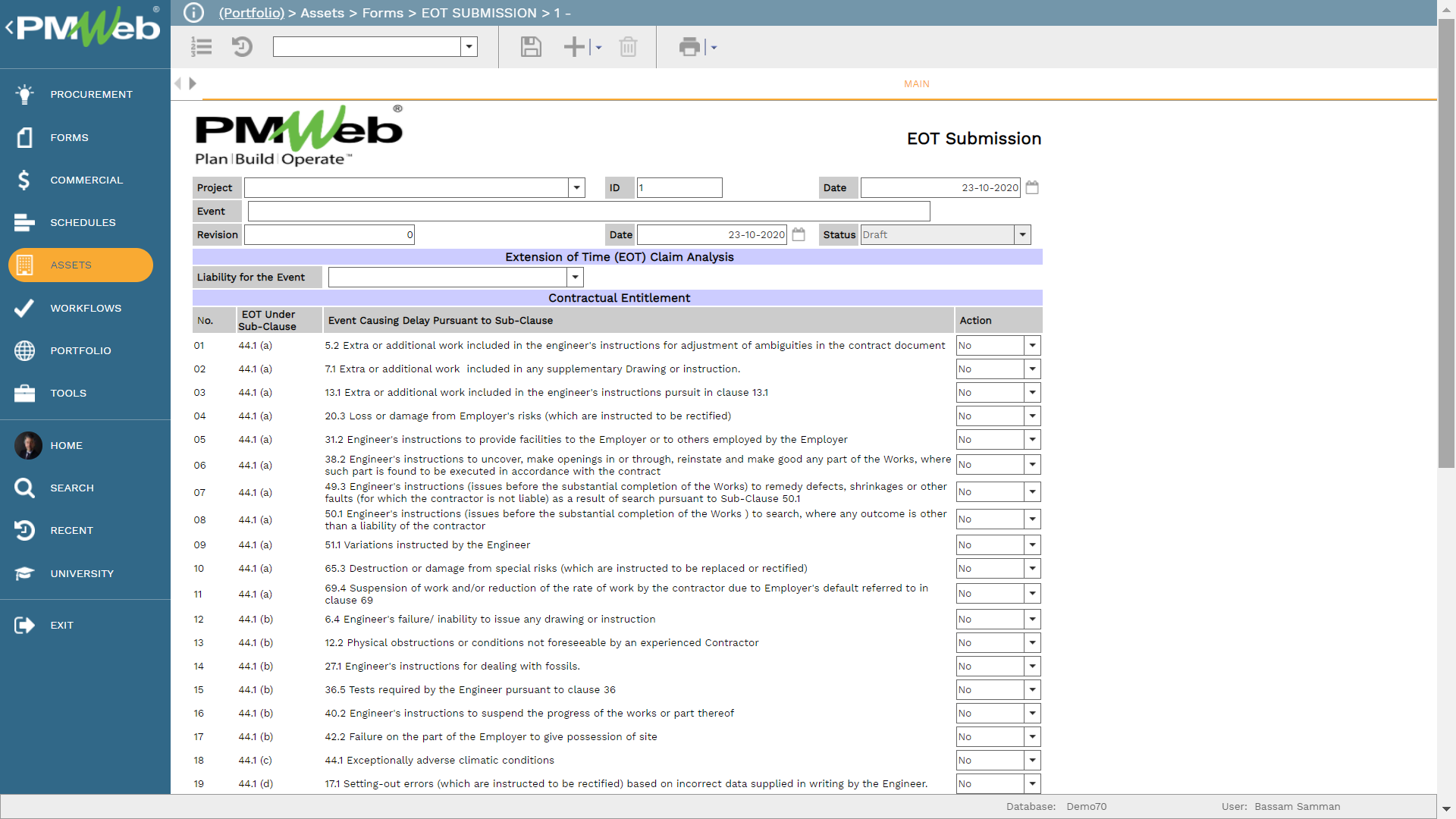
By having the information associated with the project’s schedule submissions captured and managed using PMWeb, tabular and graphical reports can be designed in the desired form and format to provide a better and faster insight into this information. Of course, the reader can drill down to any specific transaction from those real-time, single versions of the truth reports.
